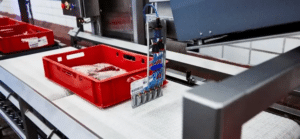Did you know that many manufacturing companies often take into consideration numerous costs – like labor expenses, materials for the manufacturing processes, and costs on various machines that they use in day-to-day work?
Though, at the same time, those same manufacturers forget about the Costs of Quality. Unfortunately, depending solely on compliance without considering the Cost of Quality might result in a few unexpected costs at best, and significant waste at worst, badly harming the bottom line and damaging brand reputation.
So in this blog article, let’s look at what is the Cost of Quality, why it’s so important to take it into consideration, what defines Costs of Good and Bad Quality, and how to improve them.
What is the Cost of Quality?
By definition, a Cost of Quality is considered a methodology that allows manufacturers to calculate how much of their resources are spent on activities that are meant to prevent poor quality, assess the quality of the organization’s goods or services, and deal with the consequences of internal and external failures.
The Cost of Quality can be illustrated by the sum of two components — the Cost of Good Quality and the Cost of Poor Quality, which will be later discussed in more detail. So the Cost of Good Quality (CoGQ) and the Cost of Poor (CoPQ) Quality equals the Cost of Quality (CoQ), as you can see in the basic equation below:
CoQ = CoGQ + CoPQ
It’s useful to think of quality indicators as the company’s overall ability to reach the production goals. So you as a manufacturer are either moving towards your companies goals and success, reaching good quality, or the exact opposite – moving away from your aim, reaching bad quality.
But keep in mind that the correlation between the quality target and quality costs is not direct in a straight line. So because customer dissatisfaction is frequently difficult to measure, the Cost of Quality curve serves as a helpful reminder that poor quality may feel and appear cheap in terms of the bottom line.
Likewise, aiming to attain high quality might lead to overspending. The goal is to strike a balance between the Costs of Excellent Quality and the Costs of Bad Quality.
All about the Cost of Good Quality
Sure, poor quality has a negative impact on the bottom line, however, there are techniques to balance it all out — for example, investing in a good Quality Management System (QMS) can prevent poor quality and generate exceptional quality in a fraction of the expense.
The Costs of Good Quality are the things a business usually does to ensure that their customers receive a product or service only in the best possible quality. So that means that CoGQ includes these expenses:
- appraisal costs — these are the costs associated with determining the effectiveness of a Quality Management System (QMS), and they affect both producers and the supply chain. These costs include internal and external inspection, testing, verification, investing in good labor and materials, maintenance and calibration, as well as market research;
- prevention costs — these planned costs are mainly ensuring that every system and machine is in place from the start. So they are the result of developing and implementing a QMS and preventing Quality issues. Quality planning, training, and quality assurance are all included in these costs.
- compliance costs — these costs include labor and management training, automation, fault-proofing, and the overall effectiveness in the manufacturing facility.
If you want to know, what is the average Cost of Quality — the short answer is that it very much depends on your company. Because some organizations devote significant resources to proactive quality management and planning, while others rely on patchwork systems and reactive operations to address issues as they arise.
All about the Cost of Poor Quality
Cost of Poor Quality (or you may just call it non-conformance) can occur both within a company’s operations and after a product is shipped in less-than-ideal conditions.
For example, internal failure costs, such as scraping and repairing poor items, and external failure costs, such as warranties and time spent handling customer complaints, are some examples of non-conformance costs. Lack of compliance makes a corporation face some additional costs that aren’t usually apparent right away. Just to name some:
- internal failure costs —these costs are usually incurred when a manufacturer discovers quality failures prior to the delivery of items or services to customers. They include waste from inefficient processes, additional scrap, rework to fix errors, and the time spent diagnosing the source of quality failures;
- external failure costs — these are the most substantial costs, and they are usually only evident after the products or services have already been delivered to the customer. Repairs, extended warranties, refunds, and the overall dealing with consumer concerns are all included in these expenditures;
- making the effort for solving customer complaints and your mistakes;
- rearranging the company’s timetable so that work can be redone.
Let’s have a look at one real-life example of massive Costs of Poor Quality — the Takata case. Takata was the world’s largest automobile airbag manufacturer. The company had to recall 67 million cars in late 2019, following 14 deaths and more than 200 injuries caused by defective airbags that just exploded when deployed, causing serious injury or even death. This resulted in fines, payments, bankruptcy, and probably irreversible harm to Takata’s reputation.
So for Takata, the total Cost of Poor Quality was the sum of internal and external failure — internal failure costs were the airbag reinspection before supplying to car manufacturers, as well as solving the problem and eliminating the main root. But the external costs majorly included penalties by the car manufacturers.
What are some steps for improving the Cost of Quality?
It is critical to handle each component independently in order to improve a manufacturer’s Cost of Quality, depending on the company’s goals. Here are some suggestions for decreasing your Costs of Quality:
- identify cost-cutting opportunities — what are some basic things your company can do right now to improve its performance?
- calculate the problem’s true expense — a well-researched estimate can provide the business with the resources it needs to continue forward, even if it takes some investigation.
- make improvement access a top priority — bring the Cost of Quality to the top of everyone’s priority list.
- actions to improve — What company-specific initiatives can managers make?
- invest in high-quality machines and systems — look for some superior equipment that can make your manufacturing process more efficient, improving the overall quality of your company’s products or services.
Speaking of high-quality equipment, we, here at PERUZA, are constantly working on ways to make manufacturers’ jobs easier, meanwhile significantly reducing the Cost of Poor Quality.
If you’re interested in smart investments that will definitely benefit your company in the long run, feel free to check out our solutions — we’re sure you’ll find something for your business as well!
Final thoughts
The takeaway is that the Cost of Poor Quality can cause irreparable damage to a business. So if you as a company manager aren’t tracking businesses losses formally, now is the best time to start doing that.
And you don’t have to track everything alone — everyone in your company can and should participate in CoQ reporting, ensuring that all of you are on the same page when it comes to expectations. When a manufacturer eliminates the additional time spent revising poorly constructed products, dealing with customer issues, paying off warranties, filing lawsuits, and cutting into schedules, the bottom line tends to look much better. This allows your staff to focus on the KPIs that actually count.
When you take a look at the numbers, it’s evident that investments in top-quality equipment and systems will easily pay for themselves many times over in a short period of time.





